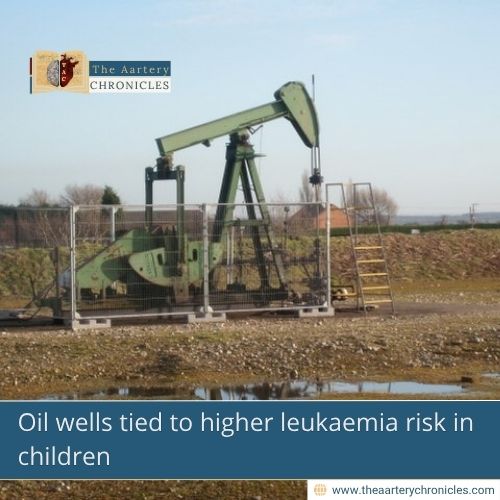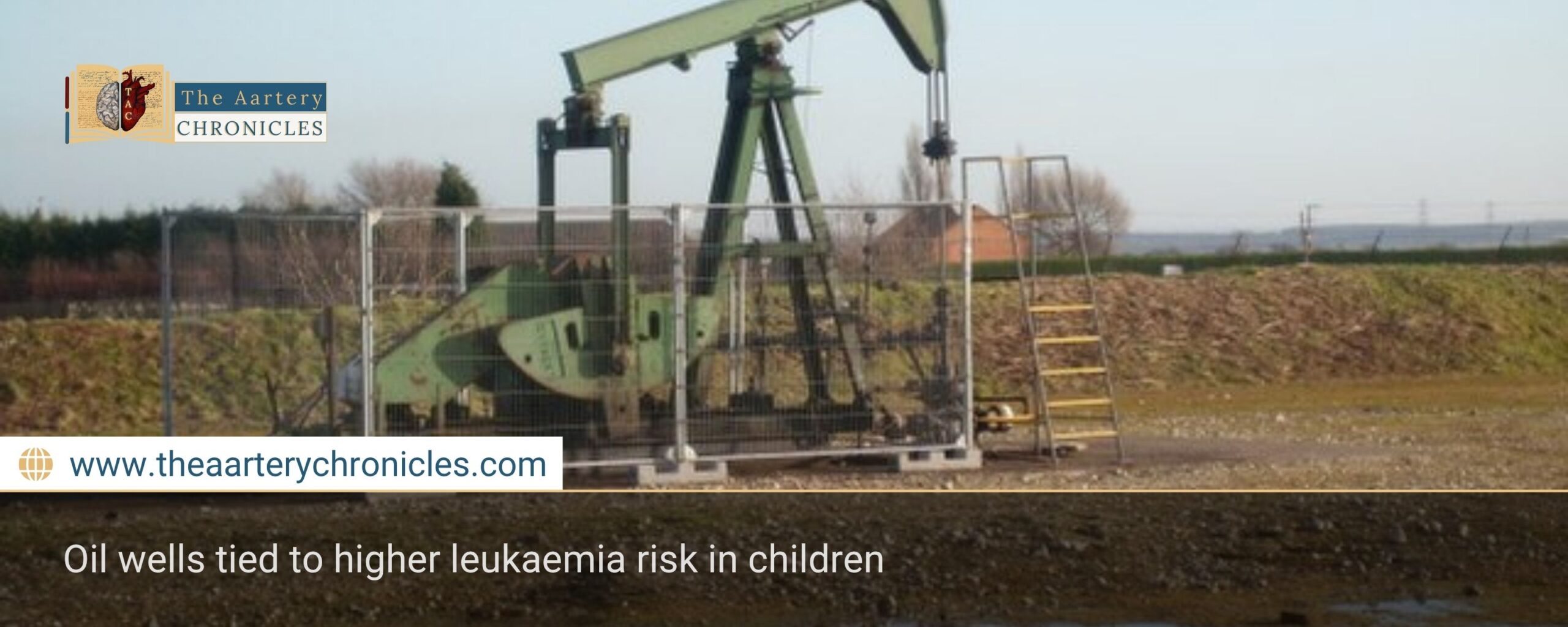

Oil wells tied to higher leukaemia risk in children
Two new studies from Colorado and Pennsylvania reveal a concerning pattern: children who live close to oil and gas wells may face a significantly higher risk of developing acute lymphoblastic leukaemia (ALL).
What Is Leukaemia and Why Does It Matter
Leukaemia is a type of cancer that affects blood-forming tissues, including Bone marrow and blood. It causes the body to produce large numbers of abnormal white blood cells that don’t function properly. These cells crowd out healthy ones, weakening the immune system and causing symptoms like fatigue, frequent infections, and bruising.
In 2025, leukaemia is expected to cause over 66,000 new cases and more than 23,500 deaths worldwide. While survival rates are improving with better treatments, childhood leukaemia remains a serious concern, especially in industrial or high-exposure areas.
What the Studies Found
Colorado: Higher Risk Linked to Well Proximity
Researchers examined 451 cases of childhood ALL diagnosed between 2002 and 2021. They compared these to 2,700 children without cancer, mapping how close each child lived to oil and gas wells.
- Children aged 2–9 who lived within 3–8 miles (5–13 km) of active wells were twice as likely to develop leukaemia.
- In areas with intense drilling activity, the risk was even higher.
- Even at distances of up to 13 km, the risk of leukaemia was significantly elevated.
This suggests a dose-response pattern: the closer and more intense the drilling, the higher the risk.
Pennsylvania: Exposure From Birth Matters
A second study in Pennsylvania looked at 405 ALL cases diagnosed from 2009 to 2017.
- Children born within 1.2 miles (about 2 km) of wells were 2 to 3 times more likely to develop leukaemia by age 7.
- The risk was greatest when mothers lived near wells during pregnancy, suggesting prenatal exposure plays a key role.
Why the Increased Risk?
Oil and gas wells release several toxic, cancer-causing chemicals, including:
- Benzene
- Formaldehyde
- 1,3-butadiene
- Polycyclic aromatic hydrocarbons (PAHs)
These substances are released through venting, flaring, diesel traffic, and wastewater handling. Benzene, in particular, is a well-documented blood carcinogen and may account for the majority of cancer risks near wells.
Young children and developing fetuses are especially vulnerable to these chemicals because their bone marrow and immune systems are still forming.
Are Current Safety Distances Enough?
In the U.S., rules about how far wells must be from homes, schools, and playgrounds (called “setbacks”) vary from 200 feet to 3,200 feet. However, both studies show that even children living several kilometres away from drilling sites may still be at increased risk.
What experts recommend:
- Expand buffer zones around residential and child-sensitive areas
- Tighten air quality and emission standards for oil and gas operations
- Include long-term health risk evaluations in drilling permits
Can These Studies Prove Cause and Effect?
The researchers used proximity to wells as a proxy for chemical exposure; they didn’t measure actual benzene or toxin levels in children. That means they can’t prove causation, only a strong association.
Still, experts say the data is strong enough to warrant precautionary public health action.
Conclusion
The findings are clear: Living near oil and gas wells may raise a child’s risk of developing leukaemia, especially when exposure starts before birth or in early childhood.
While more research is needed to confirm and understand the full impact, families living near drilling sites should be aware, and policymakers must take these early warnings seriously.
Source: Inputs from various media Sources

Priya Bairagi
Reviewed by Dr Aarti Nehra (MBBS, MMST)
I’m a pharmacist with a strong background in health sciences. I hold a BSc from Delhi University and a pharmacy degree from PDM University. I write articles and daily health news while interviewing doctors to bring you the latest insights. In my free time, you’ll find me at the gym or lost in a sci-fi novel.








